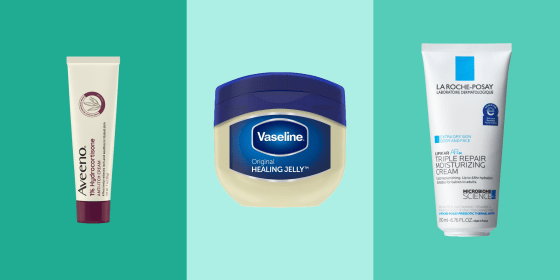
Whether it’s an allergic reaction or a chronic case like eczema, highly moisturizing formulas can help restore skin’s health.

A layer of an occlusive ointment can create a protective barrier over skin and seal in moisture. Amazon; Target
March 1, 2024, 10:11 PM UTCDermatitis is one of the most common skin conditions out there, accounting for things like reactions to new laundry detergents and medically diagnosed cases of eczema. That’s because dermatitis “represents any sort of inflammatory condition of the skin,” says Melanie Palm, M.D., a board-certified dermatologist based in San Diego, CA. This can come with telltale signs of inflammation, such as itchiness and redness.
The most common forms of dermatitis include atopic dermatitis (often called eczema), contact dermatitis (which includes allergic reactions), and seborrheic dermatitis. “The symptoms and appearance of the rash can vary based on the type of dermatitis,” says Claire Chang, M.D., a board-certified dermatologist in New York, NY. The good news is that many products can address all three forms of the condition, since they typically have ingredients that address inflammation systems.
The right products can help protect the skin against the signs of dermatitis, whatever the exact cause of the inflammation may be. When you’re shopping for the best products for dermatitis, it’s important to consider:
Below, we compiled gentle, fragrance-free cleansers, face moisturizers, body creams and other skincare products that experts consider essential for people with dermatitis.

Kiran Mian, M.D., a board-certified dermatologist in New York City recommends this classic ointment as a way “to prevent transepidermal water loss and protect the skin while it’s healing.” (Transepidermal water loss leads to dehydration, which can exacerbate fine lines and dullness.) Importantly, it’s also free of many potential irritants, which is why Ife Rodney, M.D., a board-certified dermatologist and dermatopathologist, recommends layering it over a separate body cream to further seal in moisture. “It’s free of the dyes and the fragrances and the allergens that trigger reactions on your skin,” she says.

A dermatologist recommended this cleansing bar to NBC Select editor Cory Fernandez when he was in his early 20s, and he’s used to cleanse his face and body ever since. “I love that it’s easy to lather up and doesn’t have a super strong scent,” he says. “Plus, it leaves the skin on my face feeling clean, smooth and not irritated.” It’s free of fragrances, dyes and even essential oils, and leaves skin soft and comfortable, according to the brand.
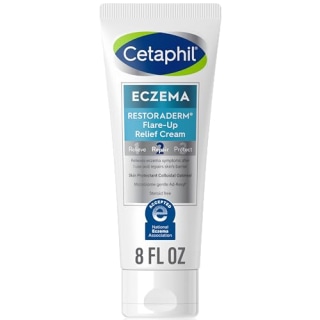
Eczema is a chronic condition that’s prone to flaring — meaning symptoms sometimes get more intense. This thick cream is formulated to comfort the skin when this happens, according to the brand. Palm likes that it has colloidal oatmeal in particular, “which has emollient properties that can help soothe irritation and heal a compromised skin barrier,” she says.
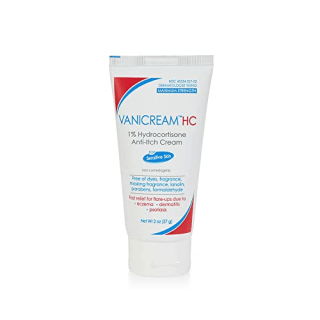
Palm says that this formula is popular among her fellow dermatologists for eczema and other inflammatory skin conditions, since it’s formulated with 1% hydrocortisone that helps soothe itchiness and calm irritation. Not only is it free of fragrance, but it also doesn’t have common skin-care ingredients like botanical extracts and essential oils. And because it’s noncomedogenic, you can use it on your face without risking clogged pores.
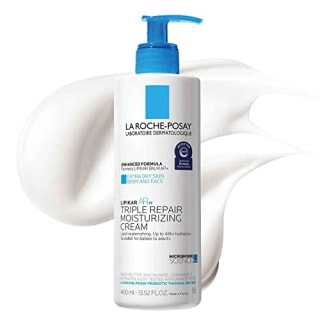
Rodney uses this body cream every day, since “it’s super moisturizing, but not too heavy or occlusive,” she says. It has moisturizing ingredients like shea butter, ceramides, and niacinamide, as well as a prebiotic thermal water, which works to rebalance the skin’s microbiome, according to La Roche-Posay. Chang also recommends it to address seasonal eczema flares. “I love this moisturizer for daily use, especially in the wintertime, to prevent dry, chapped skin,” she says. You can use it on both the face and body, and is safe for infants who are at least two weeks old, according to the brand.
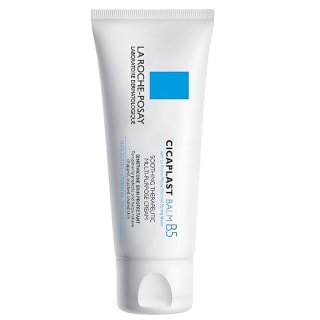
Ideal for spot-treating irritated areas (think the knuckles in winter, or diaper rash on a baby), this unscented cream has both glycerin and shea butter to soothe the skin. Chang, for her part, likes that it’s formulated with a blend of hydrating ingredients, including centella asiatica, “to help relieve dry, irritated skin,” she says. You can also use it as a preventative measure to protect skin against chapping and dryness in cold weather, says the brand.
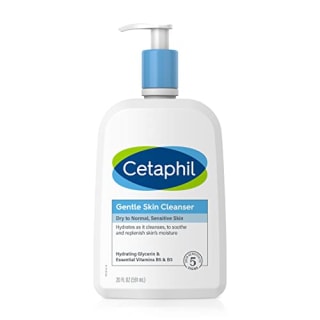
This face wash, which can also take off makeup, is highly rated on Amazon with a 4.7-star average rating from more than 9,000 reviews. Not only is it fragrance-free and noncomedogenic, meaning it won’t clog pores, it also has a blend of niacinamide, panthenol, and glycerin in its formula to help hydrate skin while also cleansing it, according to the brand.
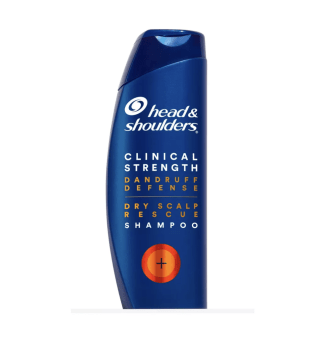
While this is technically a shampoo, Fernandez — who has seborrheic dermatitis — uses this at the advice of his dermatologist. “My dermatologist was the first person to tell me to apply Head and Shoulders on both my hair and face” he says. “Because the condition on my face is similar to that on the scalp — my dermatologist said I use this to treat both. It does a great job at preventing dryness or irritation.” It uses 1% selenium sulfide and manuka honey to control flakes and moisturize, according to the brand.
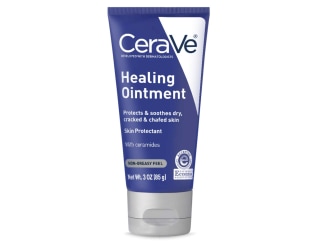
Chang likes that this ointment has a combination of ceramides, hyaluronic acid and petrolatum that help make its results long-lasting. It doesn’t have any dyes, preservatives or fragrance, and is free of lanolin, a wool-derived ingredient that can cause an allergic reaction among some people. As with other ointments, it creates a protective barrier over the skin but doesn’t feel greasy, according to the brand.
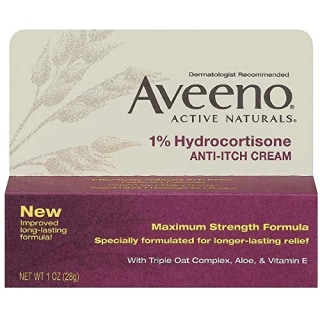
Chang often recommends this cream to her patients, since it has hydrocortisone to relieve itchiness, but also aloe and vitamin E in its formula to calm the skin and reduce inflammation, she says. It also has oat oil, which acts as a soothing conditioner for dry skin, according to the brand.
First, consider both your formulation and the ingredients, which are closely related. “A thick moisturizer, preferably an ointment, will correct dry, cracked skin and fortify the skin barrier, leaving the skin nourished and intact,” says Latanya Benjamin, M.D., a board-certified pediatric dermatologist based in Coral Springs, FL.
Occlusive ingredients (meaning those that create a physical barrier over skin) often include petrolatum and shea butter, and they’re usually available as thick, rich ointments or balms. You can supplement these with other moisturizing ingredients such as ceramides and squalane, two lipids naturally found in the skin barrier that keep it smooth and healthy.
In addition to that, consider ingredients that target the symptoms of the inflammation, such as itchiness. “Topical hydrocortisone is effective at reducing inflammation and alleviating itch that can come with dermatitis,” says Chang. Over-the-counter levels of hydrocortisone tend to be about 1%. It’s often paired with an ingredient called pramoxine, which is a helpful anti-itch ingredient found in several topical ointments, according to Palm.
You can also look for ingredients that are known to be anti-inflammatory, such as aloe vera, green tea, niacinamide and centella asiatica. If you can’t find all of the above in a single formula, you can combine two: “Generally speaking, for atopic dermatitis, some sort of topical anti-inflammatory cream should be used as well as moisturizing creams that restore the skin barrier,” says Palm. Rodney, for her part, likes to layer an occlusive ointment over a thinner moisturizer cream.
Finally, several dermatologists recommended that patients seek out sunscreens that use physical filters, such as zinc oxide and titanium dioxide. Chemical filters “can sting and irritate the skin if you have dermatitis,” says Palm.
As for what not to use, the list is long. (And keep in mind that what may be an irritant for one person may not be an irritant for someone else.) One of the most common offenders is fragrance. “Fragrances can contain chemicals that act as allergens or irritants to the skin, which can aggravate already inflamed skin,” says Chang. Plus, she says, they can contain alcohol, which “is a solvent that strips the skin of its natural oils and compromises the skin barrier, which may lead to dryness, stinging and sensitivity.”
You can also check with the National Eczema Association, a nonprofit advocacy group that has a Seal of Acceptance for products that meet its standards, which includes being fragrance-free, the absence of common irritants, and the use of only mineral, not chemical, sunscreen filters.
There are three types of dermatitis, and discerning between them requires an expert. “It is important to get the specific type of skin condition diagnosed by a board-certified dermatologist,” says Palm, since the type or severity might require a prescription-level treatment.
For starters, “when the skin is inflamed, no matter the cause, the key is to keep it clean and moisturized,” says Mian. “Inflamed skin can be more susceptible to infection.”
Start with your cleanser, which should be gentle — meaning it’s free of alkaline soaps and exfoliants, and formulated with hydrating ingredients. “These harsh soaps are known to change the ideal pH of the skin [which is acidic], further worsening the skin barrier that results in more skin irritation,” says Benjamin. Ideally, the product should be labeled with “pH-balanced.”
Then, consider your moisturizer. “Moisturizers with ceramides, glycerin or other humectants are great to use, as these will help strengthen and rebuild the skin barrier,” says Mian. She also recommends occlusive ointments, like petrolatum, since these “can help lock in moisture and protect the skin while it is healing,” she says.
What to avoid with dermatitisWhen you’re experiencing a flare, consider most of your active ingredients in the rest of your skin care routine off-limits, including:
It depends on the type of dermatitis. There’s no cure for atopic dermatitis, but it’s possible to ease a flare — although the time it takes can depend on the person, the cause and how severe it is. That said, once you start using a skin care product, “[the symptoms of] dermatitis can start improving within one to two weeks, but can take one to two months to fully resolve,” says Chang.
With contact dermatitis, it’s also important to identify and eliminate the trigger, if you’re able to, which can both help your existing rash go away and help prevent a new one. However, “if there is no improvement or symptoms worsen, it is important to consult your local board-certified dermatologist for more personalized evaluation and treatment,” says Chang.
At NBC Select, we work with experts who have specialized knowledge and authority based on relevant training and/or experience. We also take steps to ensure all expert advice and recommendations are made independently and without undisclosed financial conflicts of interest.
Deanna Pai is a freelance beauty writer and editor who has been covering beauty and health for more than a decade, including topics like curl types and ceramides. For this article, Pai spoke to five dermatologists to narrow down the best products for people with dermatitis to shop, and highlighted their recommendations about what to consider when shopping.
Deanna Pai is a freelance writer and editor at NBC Select.